Kids adore folktales. And really, that is not surprising. Folklore and fables get passed down for a reason. American folktales are an important way for us to connect with our shared history and pass down cultural values from generation to generation. American folklore is rich with tall tales.
What are tall tales, exactly? Tall tales are over the top stories with the characteristic language of outrageous claims, usually of physical strength or skill. Some examples of legends in well-known popular tall tales are Paul Bunyan, Davy Crockett, John Henry and Mike Fink.
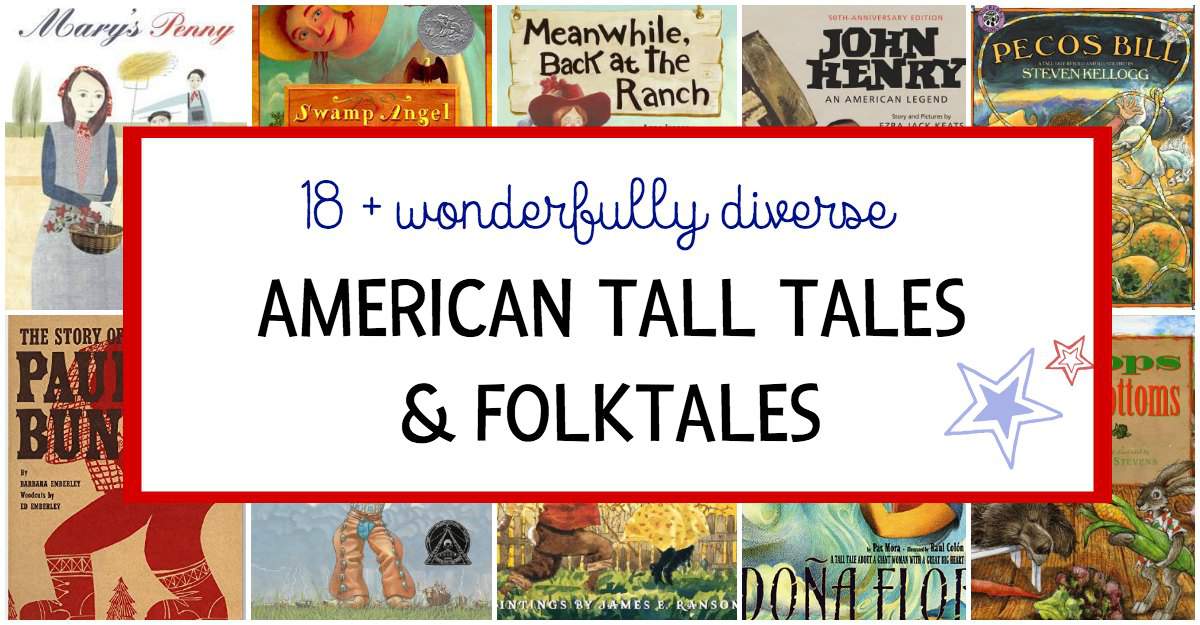
Before we go any further, if you are looking for Native American Folktales I have that book list here. The stories and tall tales for kids books I chose for this list are colonial or post-colonial American folktales.
I was quite happy that I was able to include a diverse range of American folktales on this list: Creole, African-American, American Southwest, pioneer tales and more. In fact, I was surprised to find such a wide range of picture books. I hope you enjoy them as much as my boys and I did.
Note: this post contains affiliate links that earn from qualifying purchases.
American Folktales
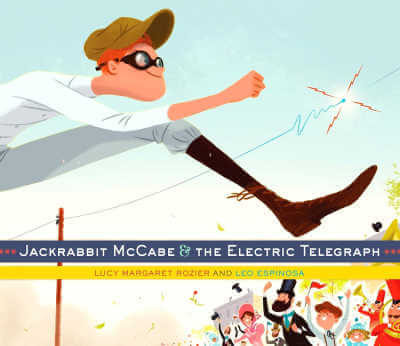
Jackrabbit McCabe and the Electric Telegraph is a new tall tale about a boy whose legs keeps growing and growing until he is faster than even the race horses. When telegraph technology comes to town, Jackrabbit McCabe insists he can deliver messages faster than any "newfangled contraption." Expect to have a fun conversation with your kids about what a telegraph is!
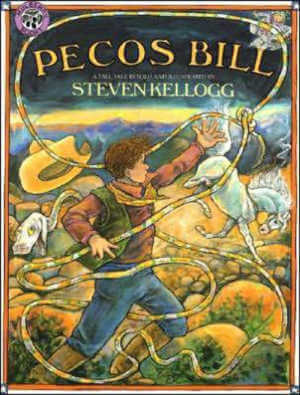
Pecos Bill. Steven Kellogg wrote a number of picture books about American folk heroes so I won't list them all here, but they are worth searching out at your local library. Kellogg brings the landscape and language of Pecos Bill's Texas to life. What I liked best about this book was the expansive illustrations that make you feel both part of the action, as well as a keen observer. The legendary Pecos Bill was a daring cowboy so don't be surprised if your kids start to practice their lasso skills after a reading (or two, or three) of this book.
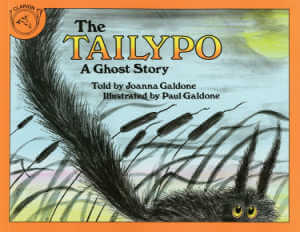
The Tailypo: A Ghost Story. Read at your own risk! I remember being freaked out by this book when I was a kid. I can't even contemplate reading it to my 7-year-old because I am worried about his response. However, if you and your kids like scary stories, go for it. Just expect to sleep with the lights on for the next 25 years or so. The Tailypo is a cat like creature from Appalachian folk lore. He is searching for the woodsman who cut off his tail and ate it for dinner. If you like scary stories, pick up Goldone's The Teeny-Tiny Woman while you are at it; it's another book that scared the bejeezus out of me when I was a kid.
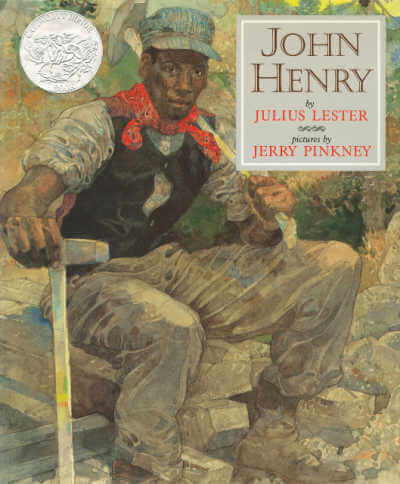
John Henry by Julius Lester is a text heavy picture book but worth the read. John Henry is an African-American folk hero who is best known for hammering through a mountain. At the end of the story Henry has spent so much energy hammering, he collapses and dies. It was not the ending I was expecting, but it didn't seem to phase my kids. Lester's text is lyrical and perfect for reading out loud. Jerry Pinkney's fantastic, award-winning paintings are a wonderful accompaniment for this story of a man who lived a "well-lived life."

Doña Flor: A Tall Tale About a Giant Woman with a Great Big Heart by Pat Mora. In the southwest, Doña Flor has a heart to match her height. When the villagers hear a strange and frightening sound, Doña Flor decides that if she can help her neighbors and friends she will. So she sets out to find the source of the noise. Following the whispered directions of her animal friends, she heads to the mesa where she finds an unexpected surprise. I loved the kind-hearted heroine of this tale and the Spanish words sprinkled throughout the text add a a wonderful texture to the story.
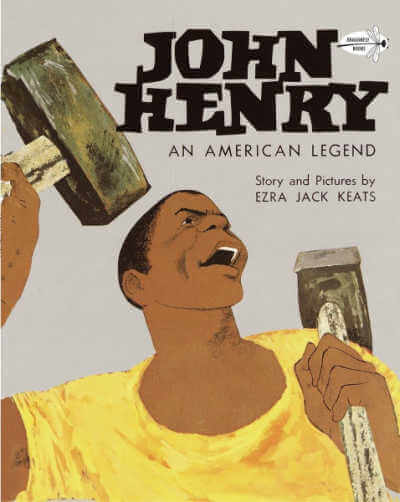
John Henry: An American Legend. Read this version by Jack Ezra Keats alongside Lester's book about John Henry, or choose this version for younger kids. It includes an interesting story of Henry's experience braving a storm at sea before he becomes the legend with a hammer. Keats' illustrations in his trademark collage style wonderfully convey the physical and heroic action of Henry and his hammer.
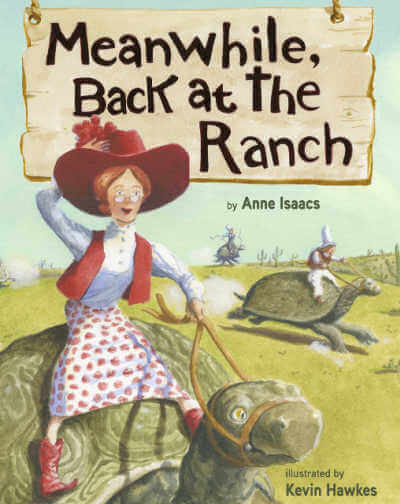
Meanwhile, Back at the Ranch by Anne Isaacs. Widow Tulip Jones from England inherits a ranch in By-Golly Gully, Texas. In Texas, she and her servants soon discover everything is bigger. Much bigger. Giant crops, huge tortoises, and unfortunately, the number of suitors vying for her hand (and her fortune). Tulip devises an elaborate plan to weed out the suitors which hilariously involves diverting a river, outwitting the bad guys, an enormous wedding cake and 1000 brides. Great fun! Trinka Hakes Noble also wrote a version of Meanwhile Back at the Ranch.
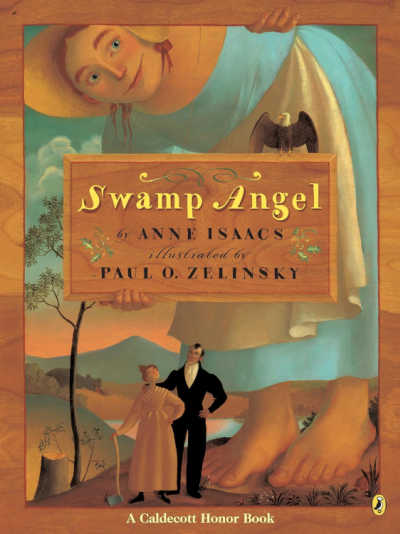
Swamp Angel by Anne Isaacs. When Angelica Longrider was born, no one could have imagined her future feats as Swamp Angel, the great Tennessean woodswoman who can lasso a tornado and drink up an entire lake in a single gulp. She even single-handedly defeats the Thundering Tarnation, the great bear, in a wrestling match. Compare the story to Miss Sally Ann (see below). Anne Isaacs has written several other tall tales, so plug her name into the library catalog for my laughs and gasps.

Although I also recommend Steven Kellogg's Paul Bunyan, I particularly enjoyed the wood block print illustrations by Ed Emberly in Barbara Emberly's 1963 book, The Story of Paul Bunyan. Paul Bunyan is a giant legendary logger with a sidekick named Babe the Blue Ox. He famously used his his ax to help carve out the Mississippi River. I felt the text was well suited to reading aloud and for me the illustrations also evoked Scandivanian folk style, which is well suited for a story set in Minnesota.
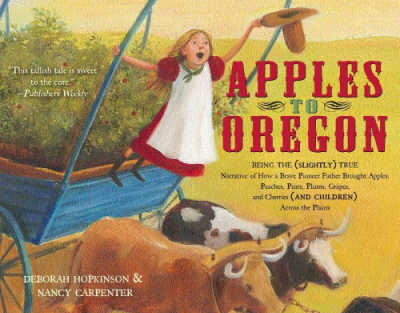
Apples to Oregon: Being the (Slightly) True Narrative of How a Brave Pioneer Father Brought Apples, Peaches, Pears, Plums, Grapes, and Cherries (and Children) Across the Plains by Deborah Hopkinson is a perfectly outlandish American tall tale spinning the yarn of one man's quest to take his precious fruit trees from one side of the country to another. He drags his family along to suffer through hailstones as big as fruit, drought, rain-filled boots, wide rivers and other hazards of the road. Daughter Delicious narrates the whole crazy adventure.

The Talking Eggs by Robert D. San Souci is a Creole folktale set in Louisiana and may remind you of Cinderella. Blanche does all the work while her sister and mama sit around fanning themselves. She meets a magical old woman in the woods who takes her to her house with talking eggs full of treasure. The old woman gives her a series of tasks and because Blanche helps her willingly with a series of tasks she gifts some of the eggs to her. Back at home, Blanche's mean spirited sister and mother become jealous. I won't give away the end, but you can guess that goodness of character wins in the end.
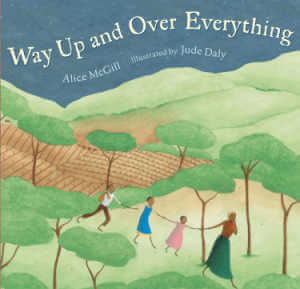
Way Up and Over Everything by Alice McGill is an African-American folktale in which slaves dream of being about to fly up and far away from their lives in bondage. The story is narrated by the great-great-great granddaughter of a slave named Jane. 16 year old Jane notices that five recently arrived slaves to the Georgia plantation have disappeared. The cruel overseer sets out to find them and bring them back, but Jane sees them flying up and away towards the sea, headed back to Africa. An end note explores the history of flying in African-American folklore.

Tops & Bottoms is a trickster tale with roots in the American South, as well as in Europe. American folktales in the post-colonial age often draw from the teller's European ancestry. The lazy bear owns a farm but since he doesn't want to do the work he makes a bargain with the poor rabbit family. The deal is that the rabbits will work the land and split the harvest in half with the bear. Rabbit only wants to know, does Bear want the tops, or the bottoms? When Bear chooses tops, Rabbit plants root crops. When Bear chooses bottoms, Rabbit plants corn. This is a clever, funny tale, and great for story time.
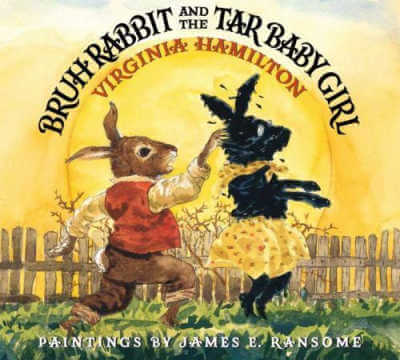
Bruh Rabbit And The Tar Baby Girl. Virginia Hamilton is the author of The People Could Fly: American Black Folktales, one of my must-read books from the 1980s. In this retelling of the classic Brer Rabbit trickster tale, Hamilton evokes Gullah folklore from the Sea Islands of South Carolina. Bruh Rabbit is stealing food from Bruh Wolf's fields so Wolf sets up a sticky trap, but will it really work to keep Bruh Rabbit out of the corn and peanuts? Kids will love to compare and contrast the work ethic and trickster abilities of Bruh Rabbit with the Rabbit in Tops and Bottoms.
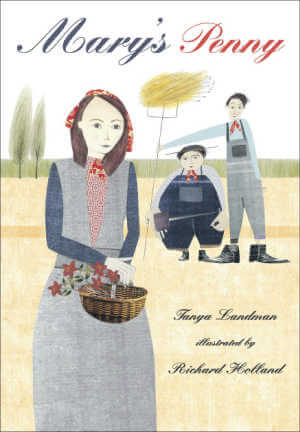
Mary's Penny by Tanya Landman is one of my personal favorites on this list. In the "golden, olden days" a farmer wants his one of his sos to inherit the farm. The farmer devises a test to see which of his sons can fill the house with goods worth one penny. When both sons fail the task, the daughter steps up to the plate, and demonstrates that, despite her father and brothers' insistence that "girls can't run farms," only she has the wits and brains to solve the puzzle.
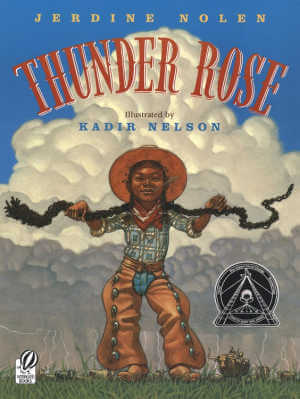
Thunder Rose by Jerdine Nolen. My son was a little obsessed with the idea that Rose could speak sentences at birth. "Babies can't talk!" he declared. Well, not only could little Rose speak just after she was born, but she could create balls of lightening, and lift a cow and "drink it dry". As she grows up, she invents barbed wire and lassos a storm to relieve a drought. Kadir Nelson's fantastic illustrations bring Rose's adventures to life.
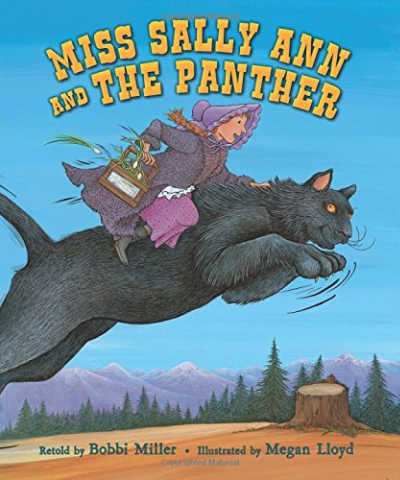
Miss Sally Ann and the Panther by Bobbi Miller. When I set out to make this list I didn't realize there would be so many American folk tales and tall tales about women! Miss Sally Ann Thunder Ann Whirlwind can blow out the moonlight and rope a hurricane but has she met her match when she meets a large black panther? Only a wrestling match will decide. When neither can overcome the other, there is nothing to do but to form a partnership. Miller's text is full of the colorful language you expect from a hearty tall tale and while Lloyd's illustrations can't compete with some of the other books on this list, the server the spirit of the tale well. Miller wrote several other tall tales, so write her name down on your library list.
Want to explore the folktales of other cultures? Try the following lists:



Kali says
I am indebted to you for all of your wonderful book lists! You must know that the books we have found through your site have enriched our time as a family and our learning so much!! This list is no exception. Thank you for all the work you do here.
Erica says
Thank you for your kind words. Happy reading!
Martha Jones says
Good day.
I have a riddle actually:
A while back, there was a movie called Click that Adam Sanddler and co. based on a much older story, but I cannot find the original story.
The gist of the story is a lot like the movie.
Boy is impatient for life's good stuff. Boy meets peddler. Peddler offers boy a gadget that makes time go faster. So he uses it here and there, and before he knows it, his life is over, and he never truly loved.
Based on other versions I've encountered - like ancient PBS cartoons with visuals, the boy went to war at some point, and his uniform was that of a Union soldier.
If you know this story might know how to better seek the answer, I'd love some hints.